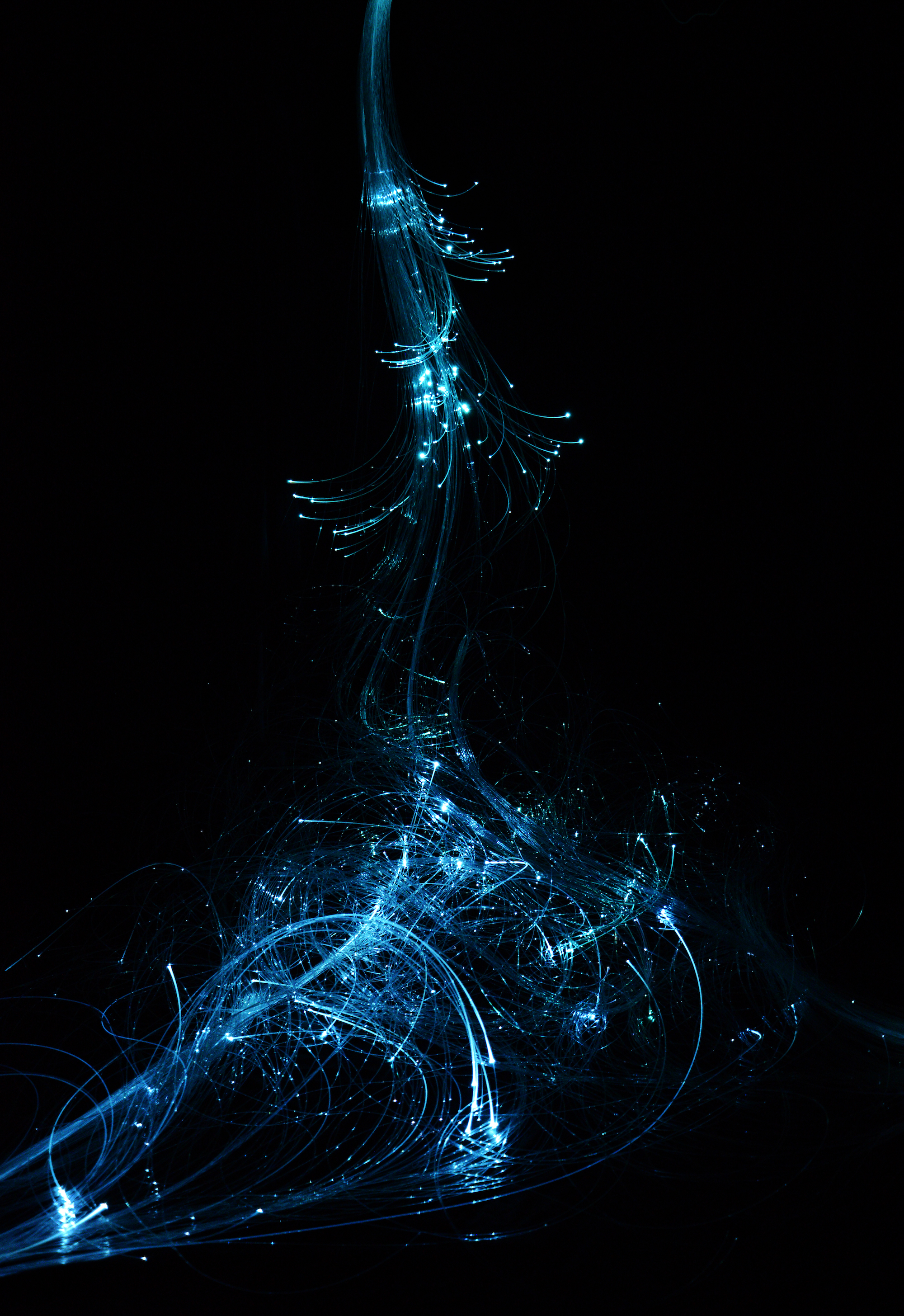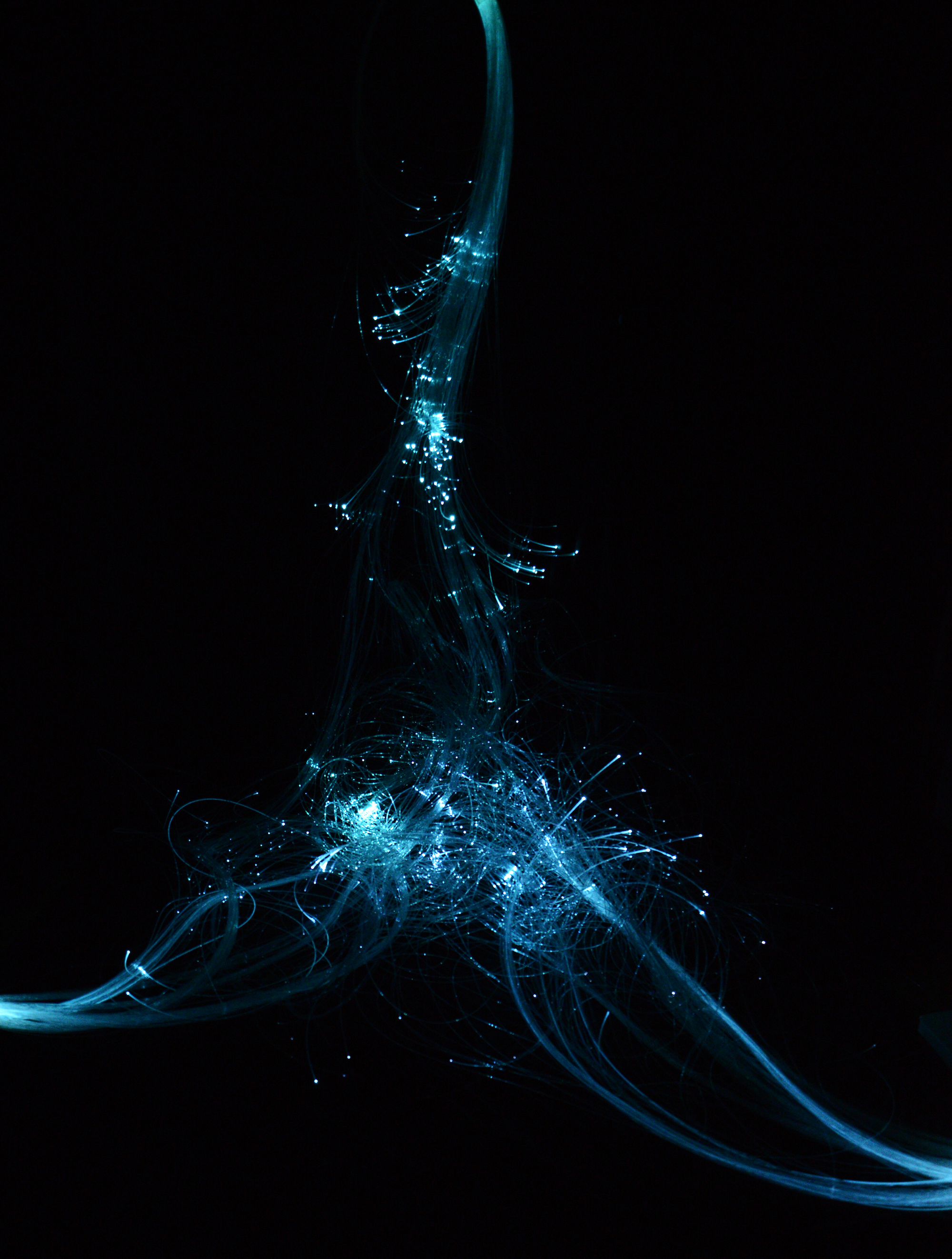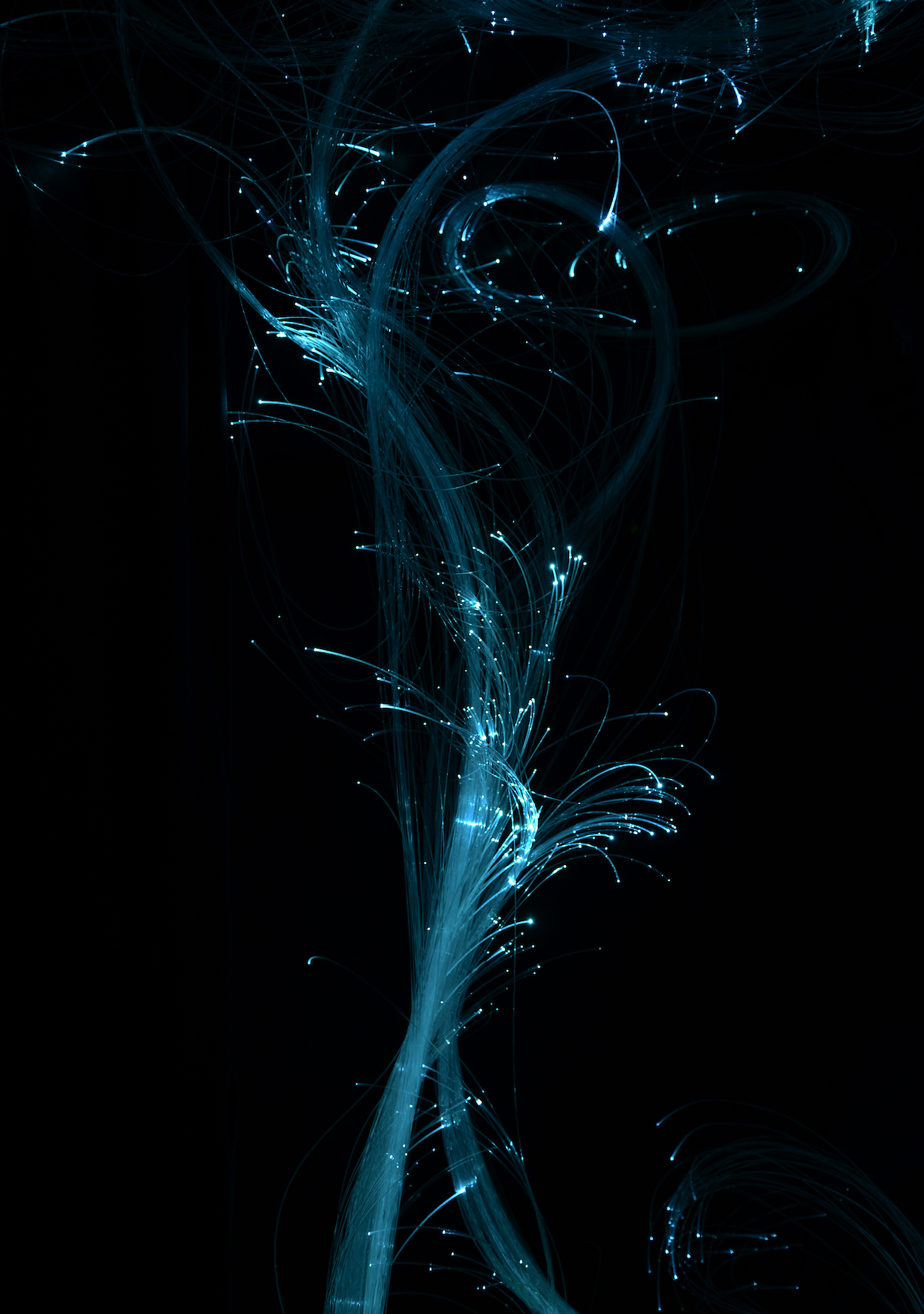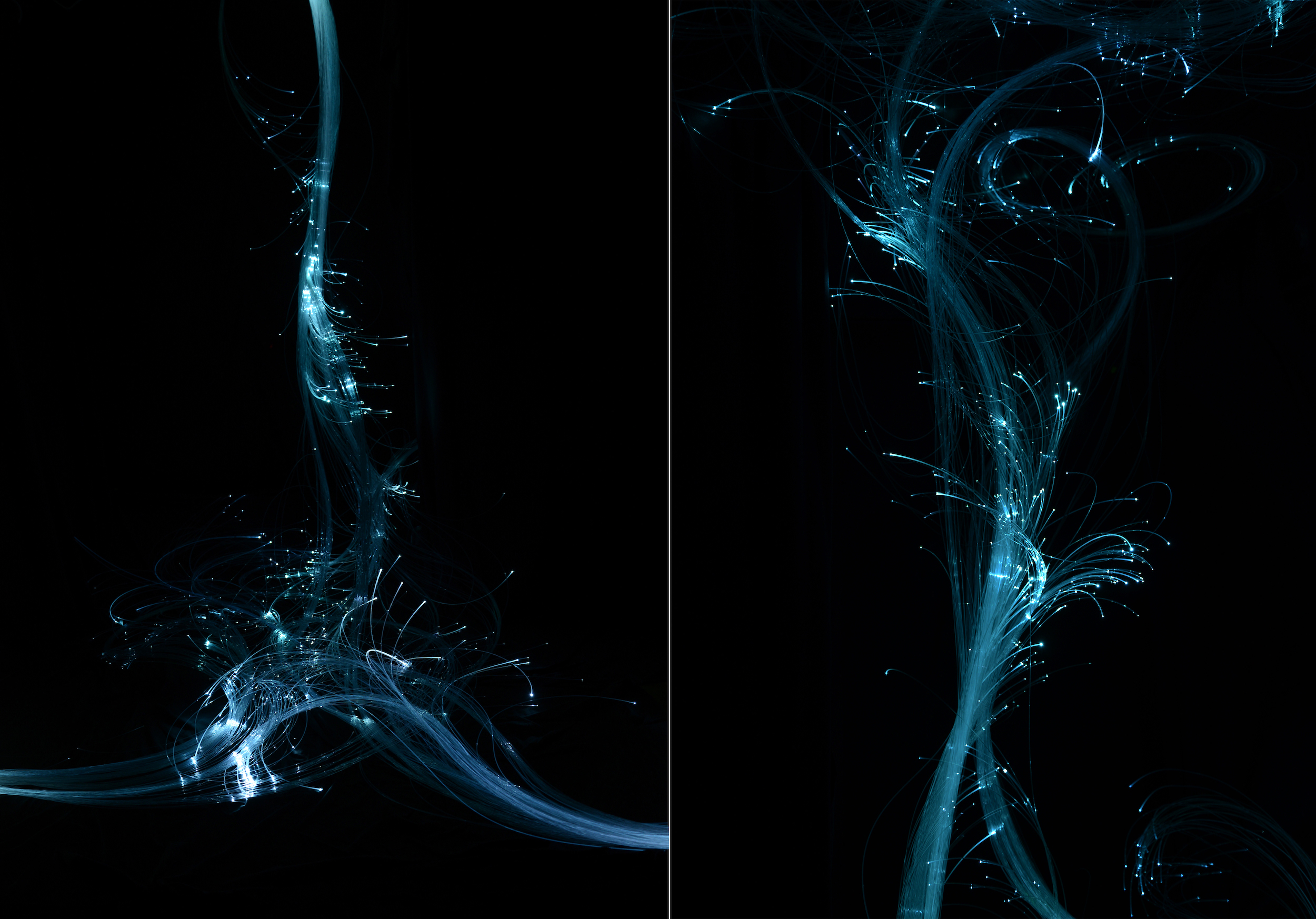
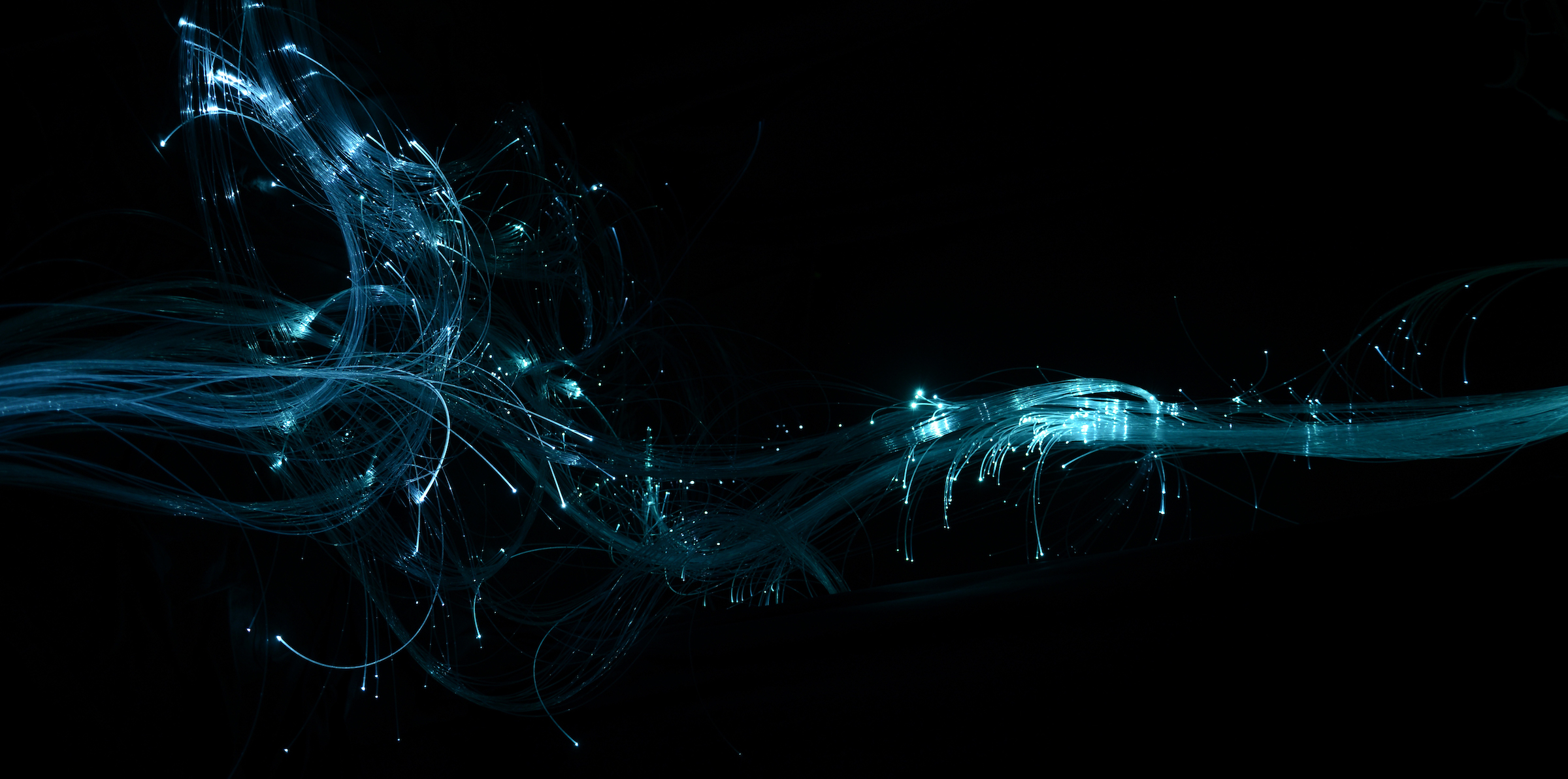
The exact manner and location in our brains where our subjective "consciousness" arises has not yet been elucidated.
According to Integrated Information Theory, the extent to which neural networks in the brain integrate information is a crucial factor in the emergence of consciousness. It is believed that consciousness is not merely a result of isolated brain activities, but arises from the coordinated functions of many different brain areas, generating integrated information (consciousness).
During sleep, particularly in the deepest phase of non-REM sleep (N3), brain activity decreases, and consciousness reaches its lowest level. It is during this phase that delta waves, slow waves ranging from 0.5 to 4Hz, are produced — waves that are absent in waking states and lighter sleep stages.
For this work, I recorded my brainwaves during non-REM sleep — a state of deep slumber where my conscious "I" is absent — and transformed them into light within an object, created using fiber optics and themed around the motifs of sound, neurons and synapses. The work serves as a confrontation with the "I" that exists within my unconscious self, prompting reflection on the meaning of "I" and the nature of consciousness.
私達の主観的な「意識」が脳のどこでどのように生じるのか、未だ解明されていない。 統合情報理論によると脳内の神経ネットワークがどれだけ情報を統合しているかが意識の発生に重要な要素とされ、単なる単発の脳活動ではなく、多くの異なる脳領域が協調して機能し、統合された情報(意識)を生成すると考えられている。 睡眠においては、最も深い睡眠(ノンレム睡眠・N3)時に脳活動が低下し、意識レベルは最も低くなる。その際、覚醒時や浅い睡眠段階では見られないデルタ波(徐波)とよばれる0.5~4Hzの脳波が発生する。
この作品は、ノンレム睡眠時(深い眠り・私という意識がない状態)に計測した自身の脳波を、音とニューロン・シナプスをモチーフに光ファイバーを用いて制作したオブジェに光として反映させた。意識のない私にある私と対峙することで、私とは、意識とは、を自身に問う。
For this work, I recorded my brainwaves during non-REM sleep — a state of deep slumber where my conscious "I" is absent — and transformed them into light within an object, created using fiber optics and themed around the motifs of sound, neurons and synapses. The work serves as a confrontation with the "I" that exists within my unconscious self, prompting reflection on the meaning of "I" and the nature of consciousness.
私達の主観的な「意識」が脳のどこでどのように生じるのか、未だ解明されていない。 統合情報理論によると脳内の神経ネットワークがどれだけ情報を統合しているかが意識の発生に重要な要素とされ、単なる単発の脳活動ではなく、多くの異なる脳領域が協調して機能し、統合された情報(意識)を生成すると考えられている。 睡眠においては、最も深い睡眠(ノンレム睡眠・N3)時に脳活動が低下し、意識レベルは最も低くなる。その際、覚醒時や浅い睡眠段階では見られないデルタ波(徐波)とよばれる0.5~4Hzの脳波が発生する。
この作品は、ノンレム睡眠時(深い眠り・私という意識がない状態)に計測した自身の脳波を、音とニューロン・シナプスをモチーフに光ファイバーを用いて制作したオブジェに光として反映させた。意識のない私にある私と対峙することで、私とは、意識とは、を自身に問う。
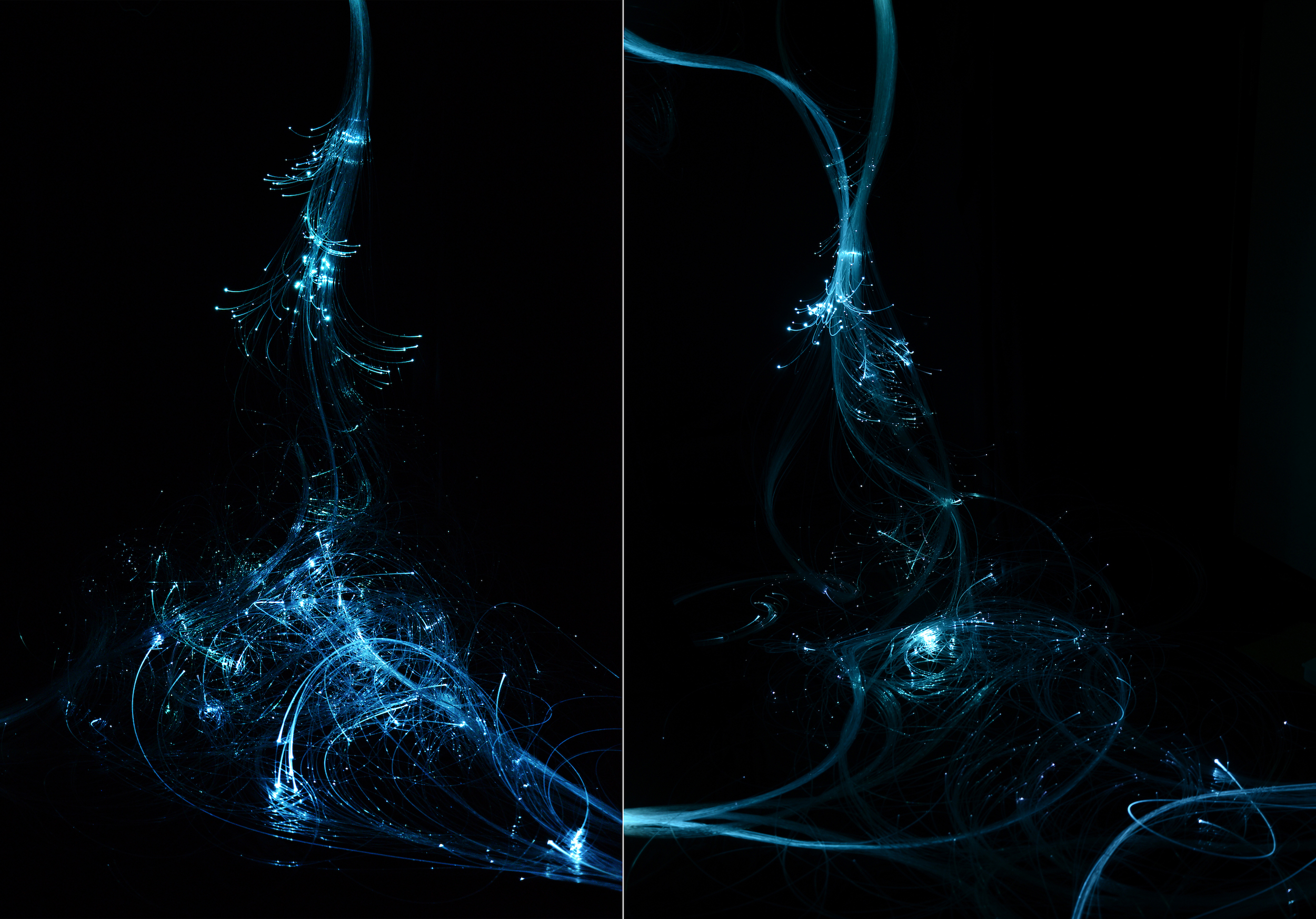
Technical advice :
Masaki Teruoka ( Device Engineer / Bio-electrical system )
